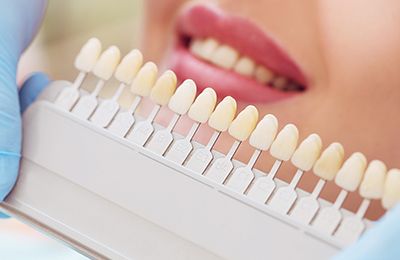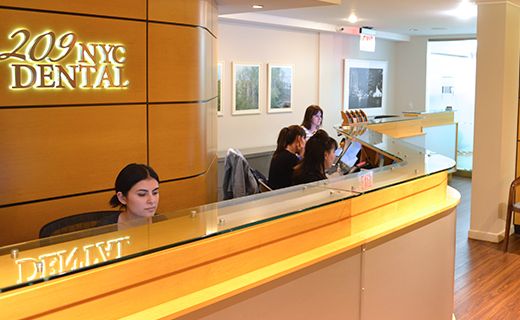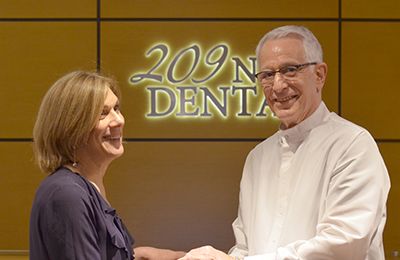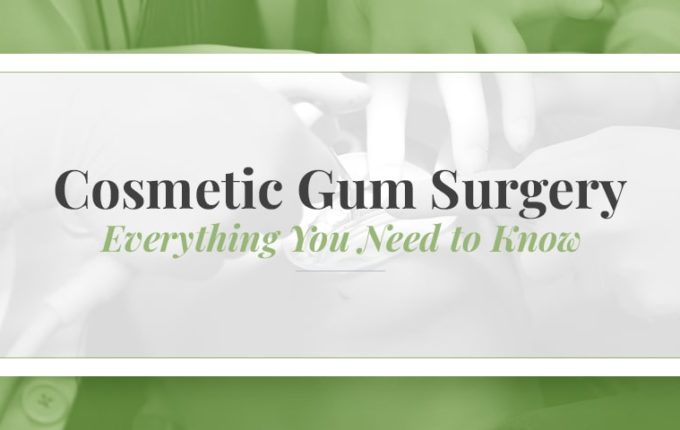Tips for Recovering From Gum Graft Surgery

One day we look in the mirror and our smile seems a little off. A tooth seems longer and at the base, it seems browner. If we drink something cold it sends shock waves to our brain. This condition is known as receding gums. It affects four to twelve percent of our population. The gum tissue (gingiva) is thinning out and migrating away from the crown of the tooth and thus exposing the root (brown in appearance). If left untreated this condition can lead to decay (root much softer than a crown, it doesn’t have enamel), bone loss, and eventual loss of the tooth.
Cause of Receding Gums
Bruxism (the grinding of our teeth, especially when we are sleeping): Grinding wears down the edges of our teeth; it also imposes a horizontal force on the tooth that causes the gum and the underlying bone to shrink away (recede)
Poor oral hygiene: Food debris plus sugar (sucrose) leads to plaque formation and recession of the underlying tissue
Poor diet: Sugar, fried and greasy foods bad for supporting structures of our teeth
Brushing too hard: Horizontal forces abrade gum and cause it to shrink
Brushing with an abrasive toothpaste: Cause wearing away of the enamel and thinning of gingival tissue, especially seen in “whitening” toothpastes that are ineffective and can do more harm than good.
Previous treatment: Orthodontic treatment, where teeth might have moved too quickly-during orthodontic treatment teeth must be moved carefully, Invisalign treatment is ideal
Genetics: the hand that our parents dealt us
Age: Gingival recession seems to increase in incidence as we get older, all that “trauma” we have done eating, chewing, playing sports, and grinding.
Not completing necessary dental treatment: If our teeth line up properly several good things occur. First, food is deflected away and not trapped in between our teeth. Second, when we chew, clench, incur trauma to our jaw, the forces are deflected through the long axis of the tooth and not horizontally, thus maintaining the gum and bone level.
Receding Gums Prevention
- Regular dental checkups and cleanings two times a year with x rays as needed
- Brushing for two minutes, twice daily with a small head, soft bristle brush, flossing once a day preferably before going to sleep
- Invisalign braces-aligning our teeth properly and eliminating horizontal forces as much as possible when chewing, clenching, or playing sports
- Night guards-easy noninvasive way to eliminate bad effects of grinding and contact sports
- Soft bristle electric brush ie. SonicCare
- Diet low in sugar, high in fresh fruits and vegetables, Vitamins A and C
- Low abrasion toothpaste ie.Sensodyne
Gingival Graft Surgery Overview
Your recession has been diagnosed. Our board-certified periodontist, Dr. Jin Wang, has explained the different treatment options. Together, you have decided that you are a great candidate for a gingival graft. Dr. Wang has examined you, reviewed your medical history, and has taken the appropriate x rays. He has determined that you have enough interproximal bone, which will supply the necessary blood flow to the graft. You will be given local anesthetic which will completely numb the surgical sites. If needed nitrous oxide can be administered to further sedate anxious patients.
Types of Grafts
- Free Gingival Graft: When the recession is severe and we need to augment very thin tissue, or there is no keratinized tissue, this is a good choice. Once this graft is in place it will prevent any further bone loss. The tissue from the upper palate of the patient is used. We take the outer covering (the epithelial layer) as well as the deeper connective tissue. This leaves a wound in the palate that heals in one to two weeks
- Connective Tissue Graft: When the recession is moderate this is a great way to increase the length and thickness of the gingival tissue (that has receded). This is our most common graft. The donor site is the palate of the patient. This time a small incision is made, the connective tissue alone is used for the graft. The epithelial (outer layer) remains intact, thus allowing Dr. Wang to suture it back into place. There is no open wound. The sutures are removed in five to seven days.
- Pedicle Graft: This is a good choice when the recession involves a single tooth. The tissue on the teeth to the front and back of the problem tooth must be very thick and healthy. Dr. Wang rotates the tissue from the neighboring tooth and sutures it into the receded defect. This graft maintains its blood supply from the original donor site because it is never completely removed.
- Alloderm Graft: This graft is the least invasive as it comes from a donor other than the patient. The palate is not used. The site of the recession is prepared and the new graft is sutured into place. These grafts come from the same species as the patient. They have very little post-op discomfort.
After Surgery
- Antibiotics-to prevent post-op infections, usually for a seven-day course
- Palatal stent-used occasionally with free gingival grafts
- Ice-applied to the surgical area to prevent swelling. Ten minutes on, then ten minutes off for one to two days. Ice cubes work well, frozen green peas are even more comfortable.
- Position-keep head elevated, try to sleep on back or side
- Analgesics-pain is usually minimal with people returning to work the same day or the day after. Discomfort is controlled by using tylenol extra strength and ibuprofen (advil) alternately.
- Avoid hot and cold foods
- Drink lots of liquids-needed to hydrate body after procedure
- Soft foods-no hard, scratchy or acidic foods. We do not want to disturb the surgical sites with trauma. Citric juices too acidic if palate was used as a donor site, best to avoid.
- Good hygiene-can gently brush teeth (not in surgical site) day after procedure. NO flossing for two weeks. Gently lavage mouth 2x daily with Peridex Rinse
- NO strenuous exercise for two weeks. Walking, working at desk are encouraged
- Rest, rest, rest a great healer for our body.
- To stop bleeding use sterile gauze with light pressure. Tea bags, that contain tannic acid, can be moistened with cold water and placed on the bleeding area to make it stop quickly, again apply gentle,firm pressure. Note that light bleeding (oozing) is quite normal for the first two days following surgery.
Book an Appointment with 209 NYC Dental
If your gums are receding, your smile looks awkward and you are experiencing sensitivity to hot and cold you may be a candidate for gingival graft surgery. Don’t delay, call 209 NYC Dental and make a consultation with our general dentists. This consultation is complimentary. Consultations with our Board Certified Periodontist, Dr. Wang, are $200. Call us today at 212-355-2290.
 Our History
Our History
 Our Providers
Our Providers
 About Us
About Us
 Blog
Blog
 Contact us
Contact us
 Diagnostic & Preventive
Diagnostic & Preventive
 Implant Dentistry
Implant Dentistry
 Cosmetic Dentistry
Cosmetic Dentistry
 Clear Braces
Clear Braces
 Periodontics
Periodontics
 Patient Forms
Patient Forms
 Payment Information
Payment Information
 Insurance Options
Insurance Options
 CareCredit Dental
CareCredit Dental
 Appointment Policy
Appointment Policy
 Free Consultation
Free Consultation
 Complimentary Teeth Whitening
Complimentary Teeth Whitening
 Teeth Whitening
Teeth Whitening



